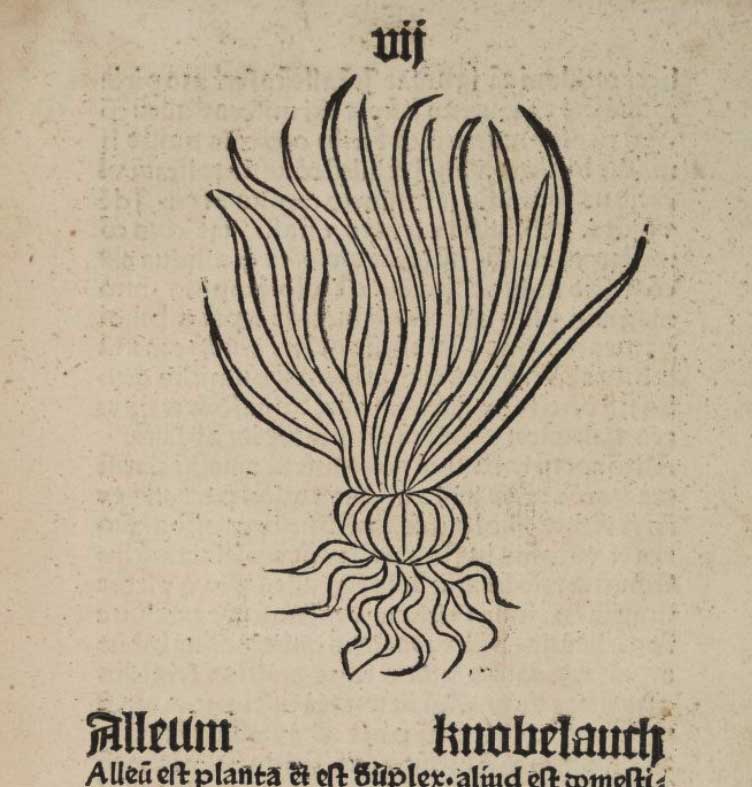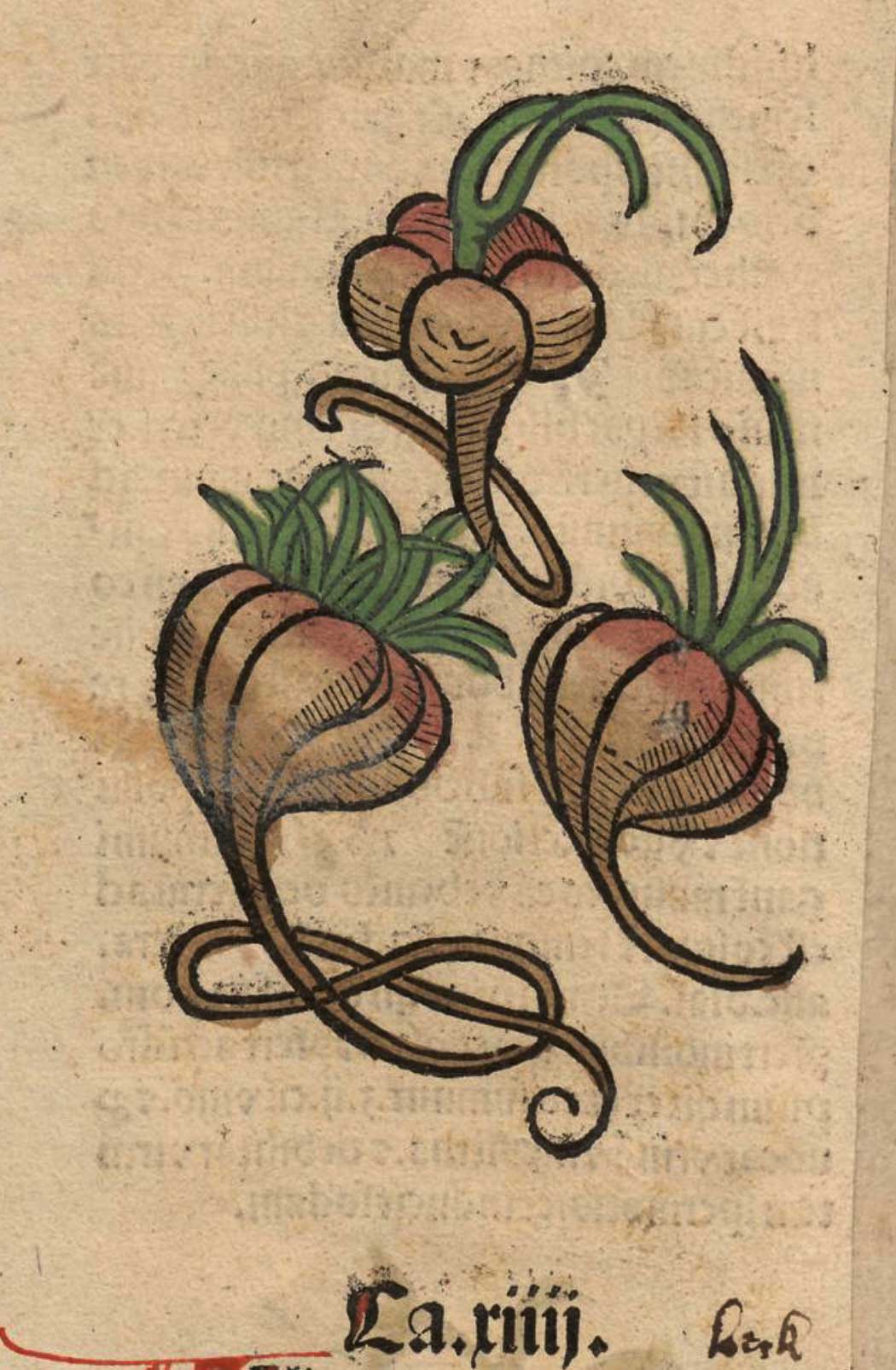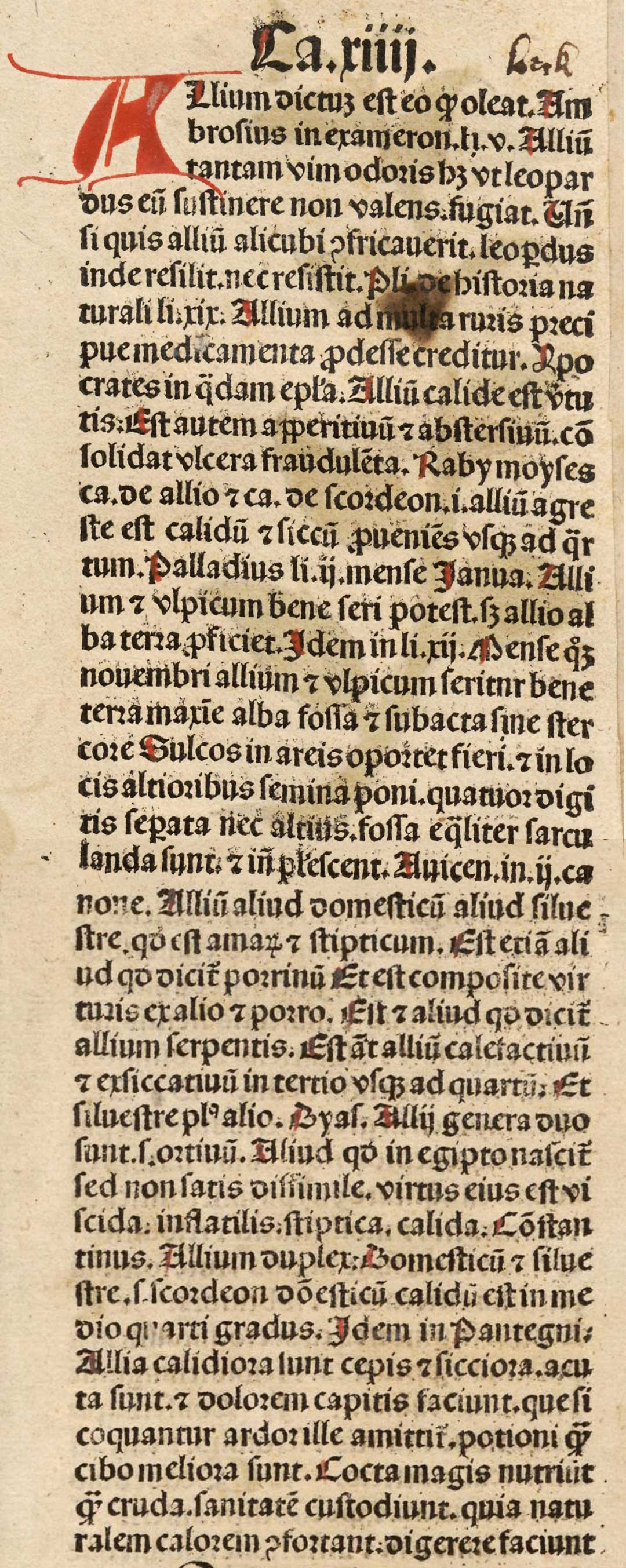Among the examples of pairings whose antipathies are not as vehement as the hatred thieves have of a certain usage of Pantagruelion.
Notes
alleum
Allium
Allium (text)
Onions to the sight
Pliny xix. 6, § 32.
l’oignon à la veue
«Omnibus etiam [cepæ generibus] odor lacrimosus», dit Pline, XIX, 32. L’oignon renferme du sulfure d’allyle, irritant pour la muqueuse conjonctivale. (Paul Delaunay)
l’Oignon, a la veue:
Alium cepasque inter deos in iureiurando habet Aegyptus. cepae genera apud Graecos Sarda, Samothracia, Alsidena, setania, schista, Ascalonia ab oppido Iudaeae nominata. omnibus corpus totum pingui tunicarum cartilagine omnibus etiam odor lacrimosus et praecipue Cypriis, minime Cnidiis.
In Egypt people swear by garlic and onions as deities in taking an oath. Among the Greeks the varieties of onion are the Sardinian, Samothracian, Alsidenian, setanian, the split onion, and the Ascalon onion, named from a town in Judaea. In all these the body consists entirely of coats of greasy cartilage; also they all have a smell which makes one’s eyes water, especially the Cyprus onions, but least of all those of Cnidos.
Nenuphar…
Encore une fois, la plupart de ces exemples se retrouvent dans le De latinis nominibus de Charles Estienne. Le nenufar et la semence de saule sont des antiaphrodisiaques. La ferula servait, dans l’Antiquité, à fustiger les écoliers (cf. Martial, X, 62-10).
onion
onion. Forms: unyon, onyon, oynyon, oynion, onion; also uniown, oynioun, oynon, onyounne, oynoun, oyne(u)on, onyone, hunyn, onnyon, unyeoun, oignion. [adopted from French oignon (formerly also oingnon, ongnon, ognon) = Provençal uignon, ignon: Latin unio, union-em unity, union, a kind of large pearl, a rustic Roman name for a single onion.]
The edible rounded bulb of Allium Cepa, consisting of close concentric coats, and having a strong pungent flavour and smell due to a volatile oil which is destroyed by boiling; it varies much in size, and in colour from dark red to white; it has been used as a culinary vegetable from the earliest known times. The plant Allium Cepa itself (N.O. Liliaceæ), supposed to be originally a native of central Asia, but very widely cultivated in almost all climates.
1356-7 Durham Acc. Rolls, Unyonn
1382 John Wyclif Bible Nimbers xi. 5 The leeke, and the vniowns [1388 oyniouns] and the garlekes.
C. 1386 Geoffrey Chaucer Canterbury Tales Prologue 634 Wel loued he garleek, oynons and eek lekes [v. rr. onyounnys, oynyons, onyons, oynouns].
1398 John de Trevisa Bartholomeus De proprietatibus rerus xvii. xlii. (1495) 628 Oyneon and Ascolonia beryth leues twyes in oo yere.
C. 1460 John Russell The boke of nurture folowyng Englondis gise 569 Þat ye haue ssoddyn ynons to meddille with galantyne.
C. 1475 in Thomas Wright and Richard Paul Wülcker, Anglo-Saxon and Old English Vocabularies (1884) 785/40 Hoc sepe, a hunyn.
1522 John Skelton Why come ye nat to courte ? 368 What here ye of Burgonyons And the Spaniardes’ onyons?
1545 Henry Brinklow Complaynt of Roderyck Mors 55 b, As moch for that purpose as to lay an vnyon to my lytel fynger for the tothe ache.
1562 J. Heywood Prov. & Epigr. (1867) 206 Wilt thow hang vp with ropes of ynions?
1596 Compt Bk. D. Wedderburne (S.H.S.) 71 Half a last of Ing3eonis.
1616-61 Barten Holyday, translator A. Persius Flaccus his Satires 318 A coated oignion then with salt he eats.
1717 Prior Alma i. 52 Who would ask for her opinion Between an oyster and an onion?
1818 Sir Walter Scott The legend of Montrose ii, Our Spanish colonel, whom I could have blown away like the peeling of an ingan.


